COM2145 – Animation 2
Animation 2 is a continuation of the Animation 1 prerequisite credit. In Animation 2, you will explore the evolution of various animation styles and techniques (traditional and digital) and apply planning, idea development and storytelling techniques to create an effective animation.
Assessment breakdown:
#1. Theory = 20%
#2. Practice = 40%
#3. Final Project = 40%
REMINDER: Unless indicated otherwise, all assignments are to be turned in through the assignments tab in Microsoft Teams.
Theory
IN THIS SECTION WE WILL LEARN IMPORTANT CONCEPTS NEEDED TO DO THE PRACTICE. PLEASE ENSURE YOU HAVE REVIEWED THE MATERIALS BELOW BEFORE TAKING THE QUIZ ASSIGNED THROUGH TEAMS.
What should you already know about Animation?
In the Animation 1 module, we learned the following:
Similarities and differences between film and animation
Brief history of animation
How different styles of animation compare
The process to creating a basic animation
It is important that you have a good understanding of each bullet listed above. Consider reviewing the Multimedia 10 - Animation 1 presentation files. Some of the bullets will be readdressed in the following Presentation 1.
Practice
IN THIS SECTION YOU WILL APPLY WHAT YOU LEARNED IN THE THEORY SECTION. THE AIM OF PRACTICING IS TO EQUIP YOU WITH THE KNOWLEDGE AND SKILLS NEEDED TO CHOOSE AND CREATE YOUR OWN FINAL PROJECT. CLICK ON THE BUTTON BELOW TO DOWNLOAD A PRACTICE PORTFOLIO TEMPLATE (MOVE IT TO YOUR STUDENT FOLDER) AND CAREFULLY REVIEW THE INSTRUCTIONS.
> How to do Practice Portfolio in Multimedia (00:00)
> Student Examples
Include the following challenges, plus pictures of any other in-class activities you completed (earn bonus marks), inside your practice portfolio:
#1 – Animation Proposal
You may want to use this practice challenge as an opportunity to plan an animation for your final project. On a slide(s) in your practice portfolio, assemble a basic animation proposal by answering the following (include prompts in bold):
Title: What is the title of your animation?
Summary: Provide a brief summary of your animation. What is the purpose behind its creation?
Script: Where is the script for your video coming from? Will you be writing it, or is it provided and/or being appropriated?
Animation Style: Describe which animation style(s) you will use and why?
Characters: List important characters and/or subjects that will be in your animation.
Backgrounds: List important background scenes that will be used in your animation.
Audio: What types of audio will you need for your animation and how will you collect them?
Technical needs: Discuss what software and equipment you will need to create this animation.
Timeline: Calendar out the animation project from start to due date. Indicate when you will complete the steps to the animation process (e.g., script finished by which date?)
#2 – Once Upon A Time
The goal of this challenge is to storyboard a SIMPLE “Once Upon a Time” bedtime story. Fill in the sentence below:
“Once upon a time there was a [insert character(s)] that went to [insert location] and [insert action(s)].”
Once you’ve determined your story, watch the ‘How to Storyboard’ video and download and print this Storyboard Template. Include your filled in sentence, and a scan/photo of your completed storyboard inside your practice portfolio.
Student example. In your opinion, how could this storyboard be improved upon so the frames tell the story more accurately?
#3 – Make It Move
The goal of this challenge is to take a static magazine ad, and on the computer, add some motion to bring it to life. To do this challenge, you will need to follow these steps:
Choose and scan/download a magazine ad
Research animated posters and cinemagraphs for inspiration and ideas
In Photoshop or Photopea (from home), select, cut, and place the different elements of your ad onto separate layers
Export each layer as a .png image.
Ensure the ad’s background is patched up or replaced if needed.
Import images into Adobe After Effects (watch the provided tutorial) and set up your video project to the same dimensions as the original ad.
Use keyframes to add different motion properties to your layers (position, rotation, scale, opacity, etc.)
Add music, sound effects, and/or voice overs that match the mood of your advertisement
Student example of a static web banner ad pulled apart in Photoshop and given movement/sound in After Effects.
Student example of a static web banner ad pulled apart in Photoshop and given movement/sound in After Effects.
View the image gallery below to see the process behind this example. Choose an advertisement with a simple background and not too many overlapping elements.

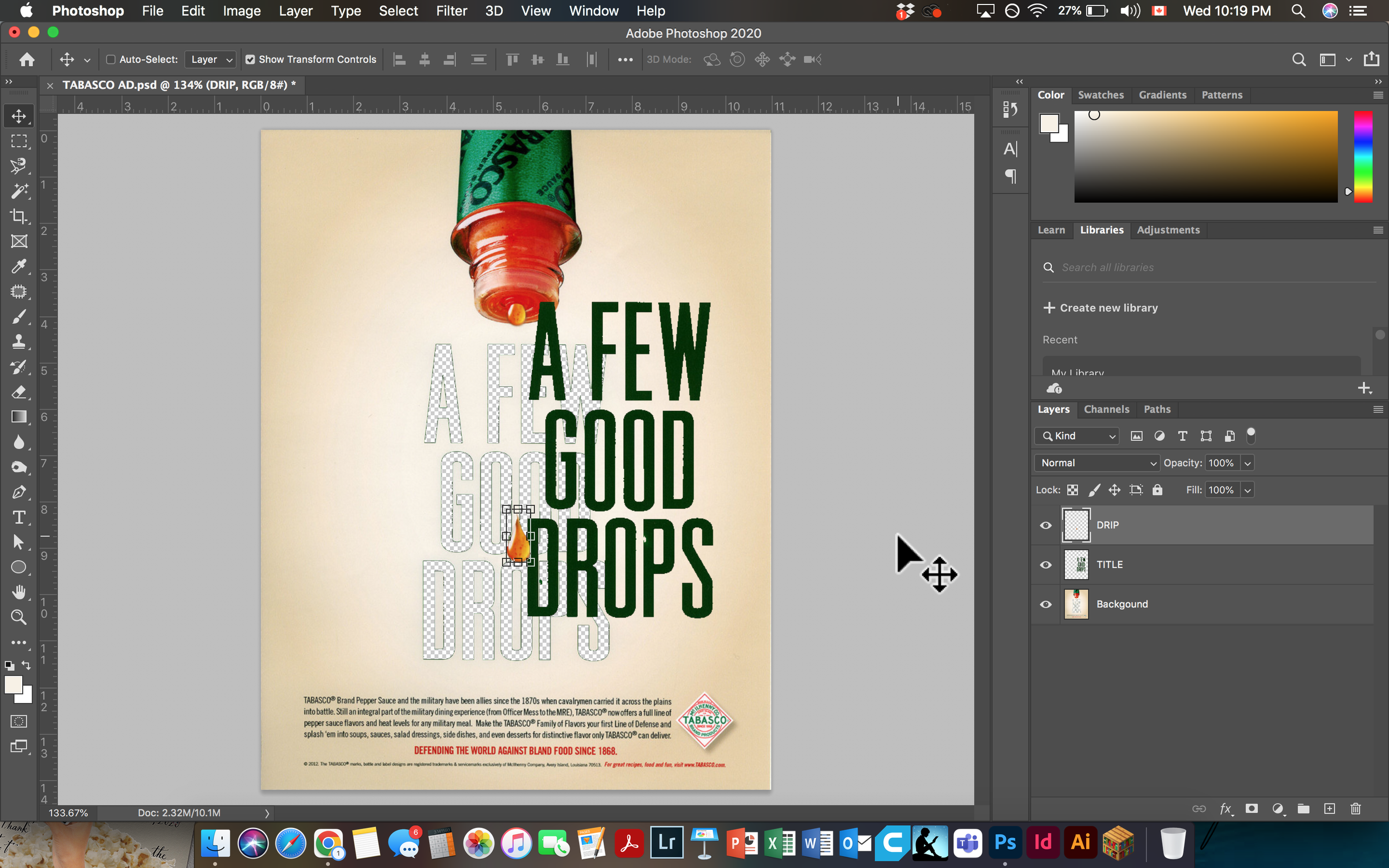
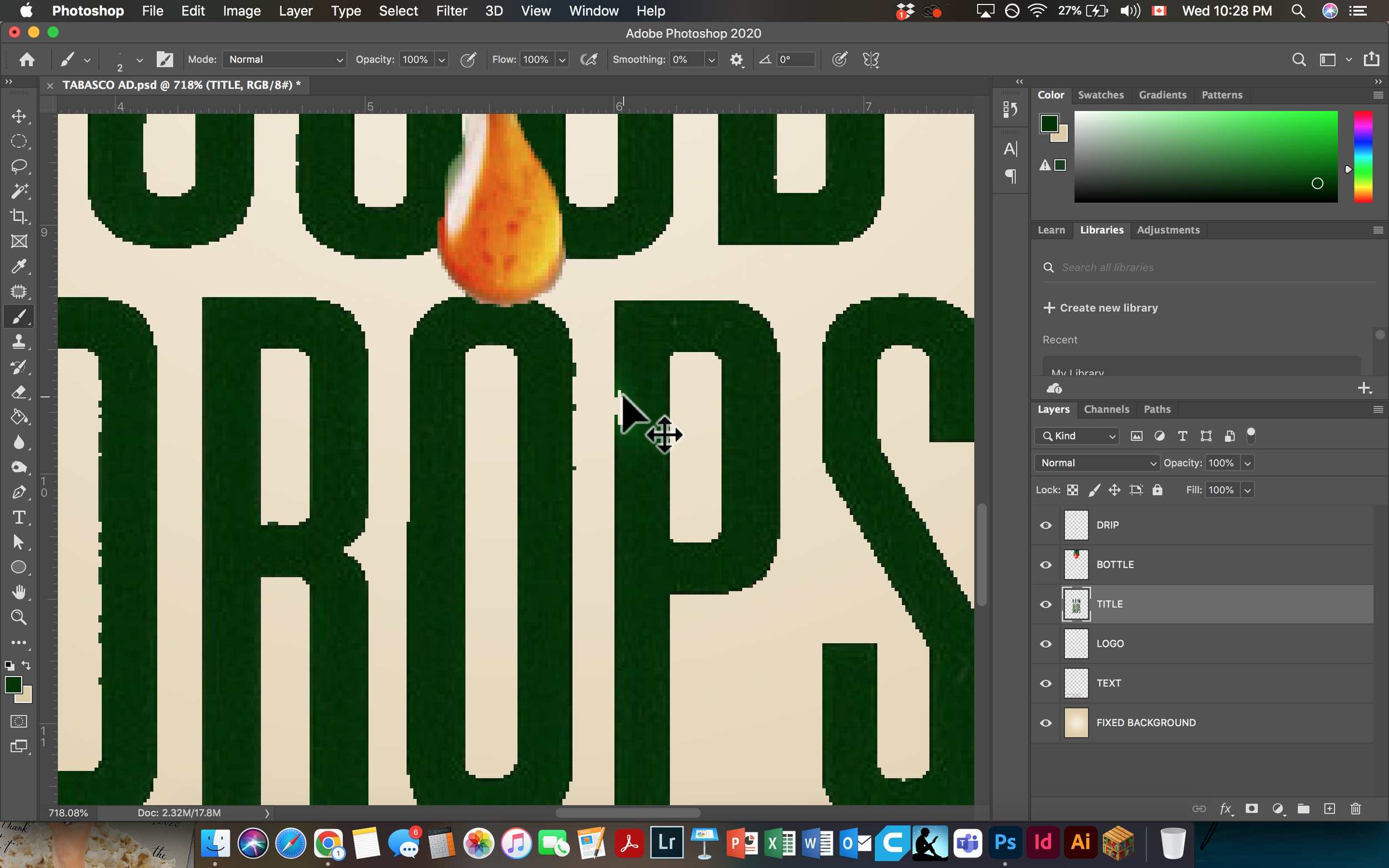
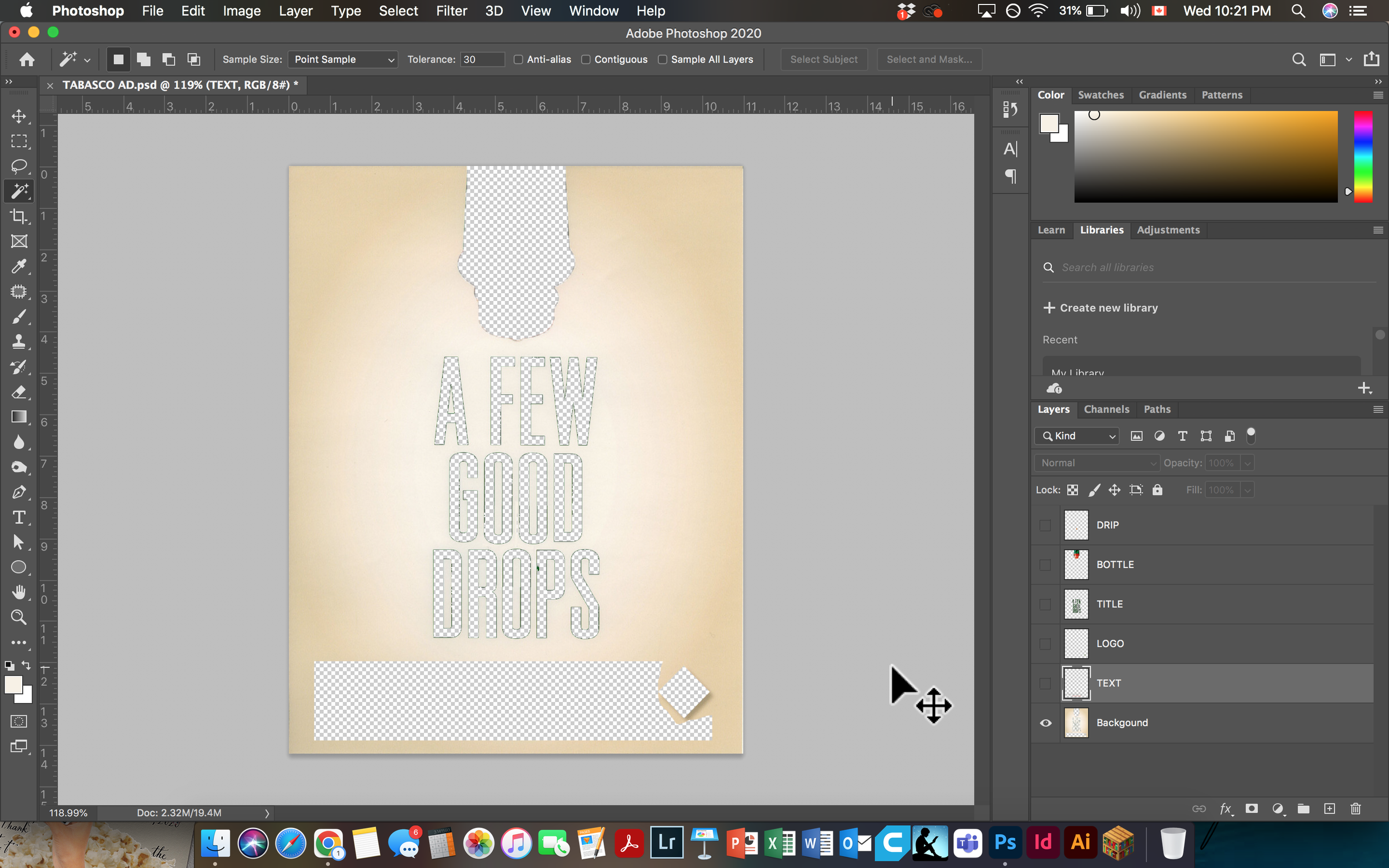
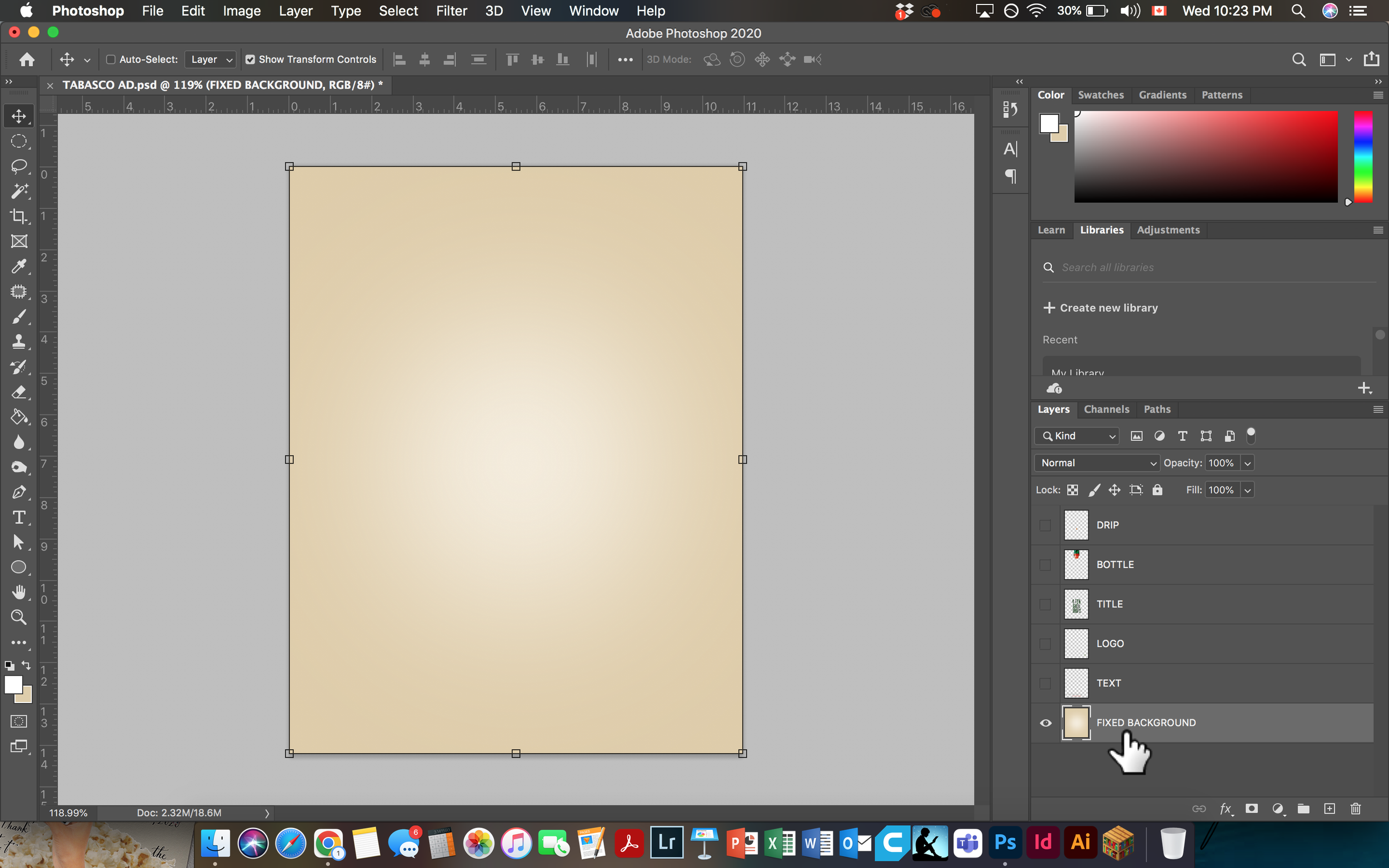
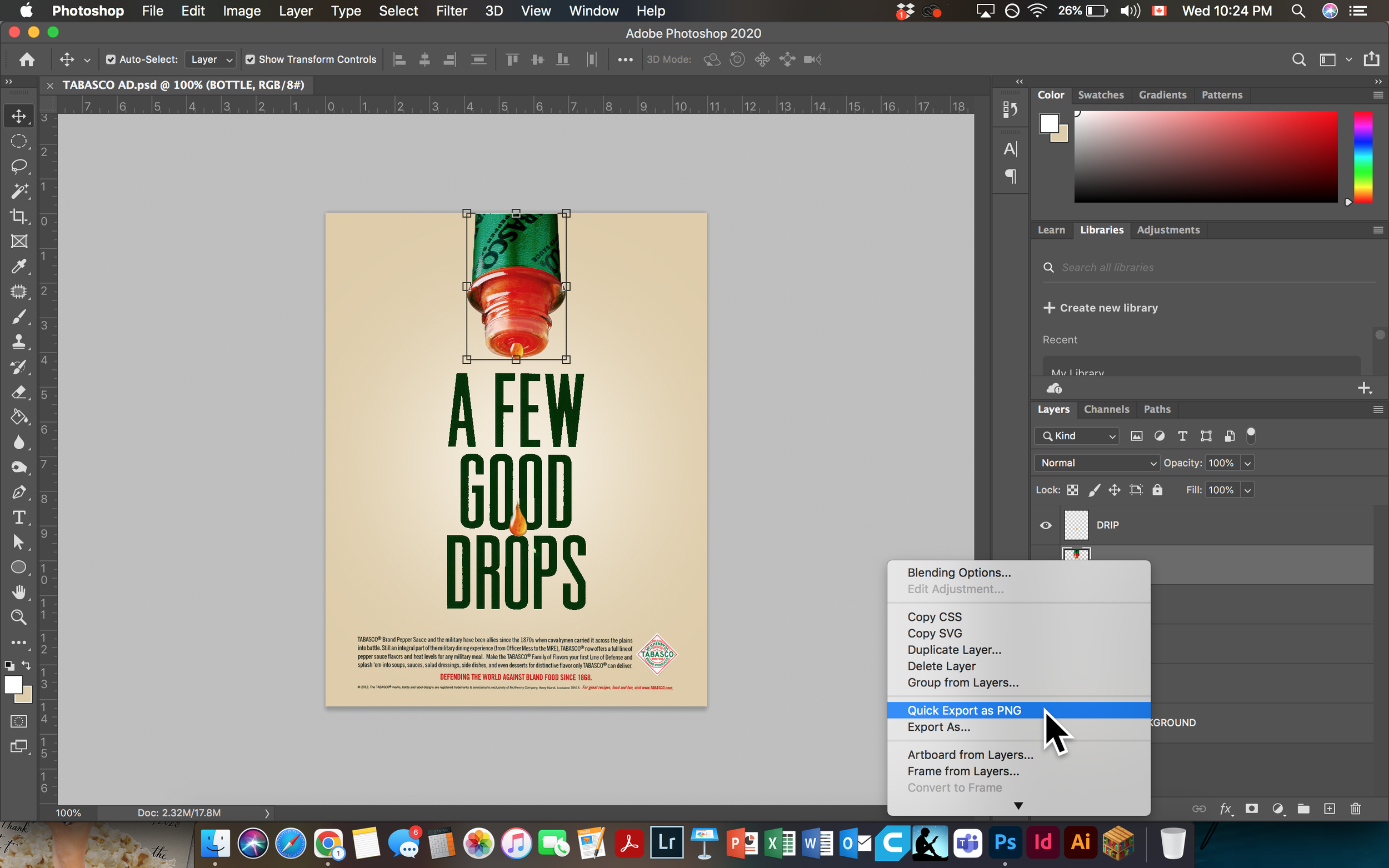
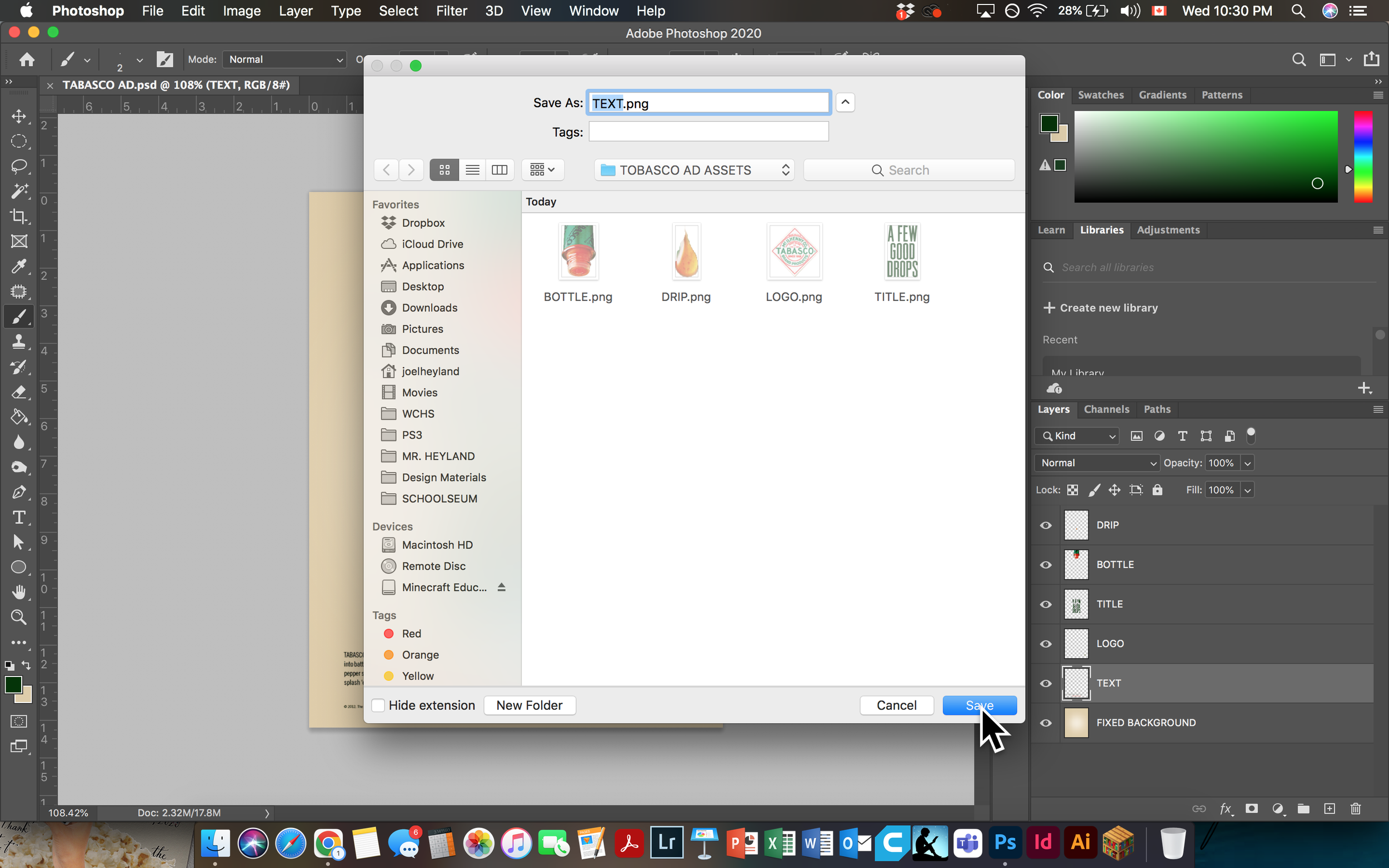
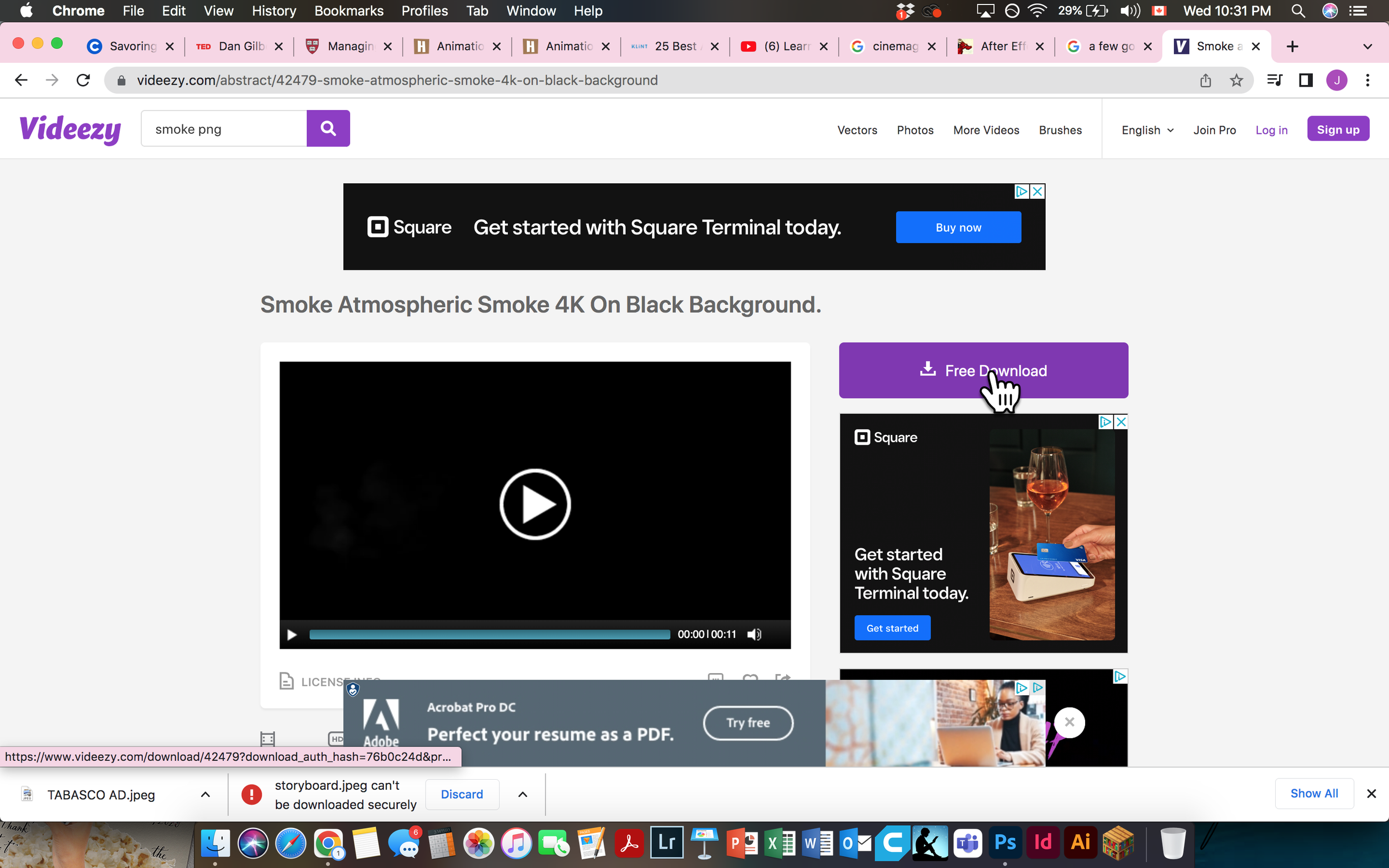
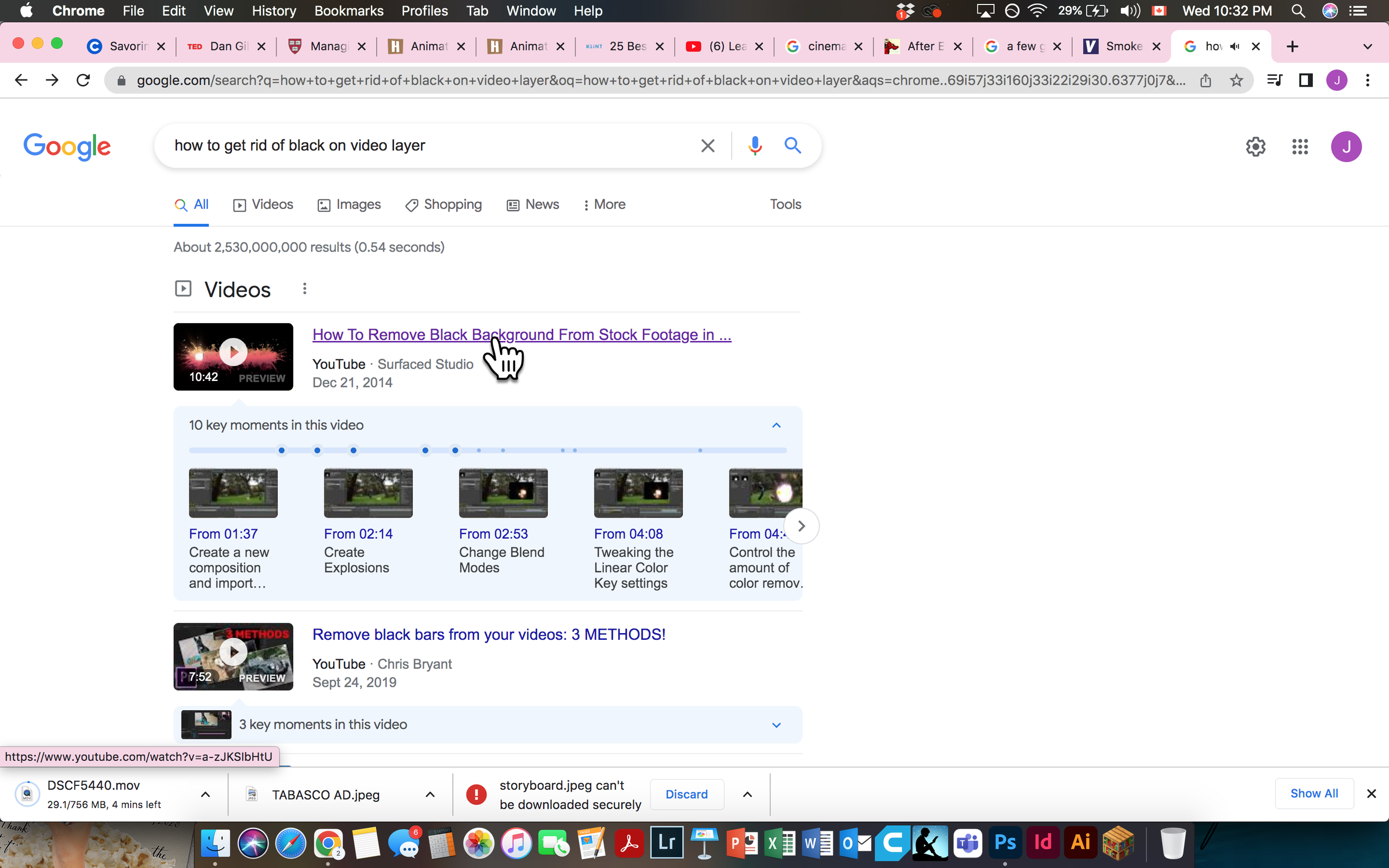

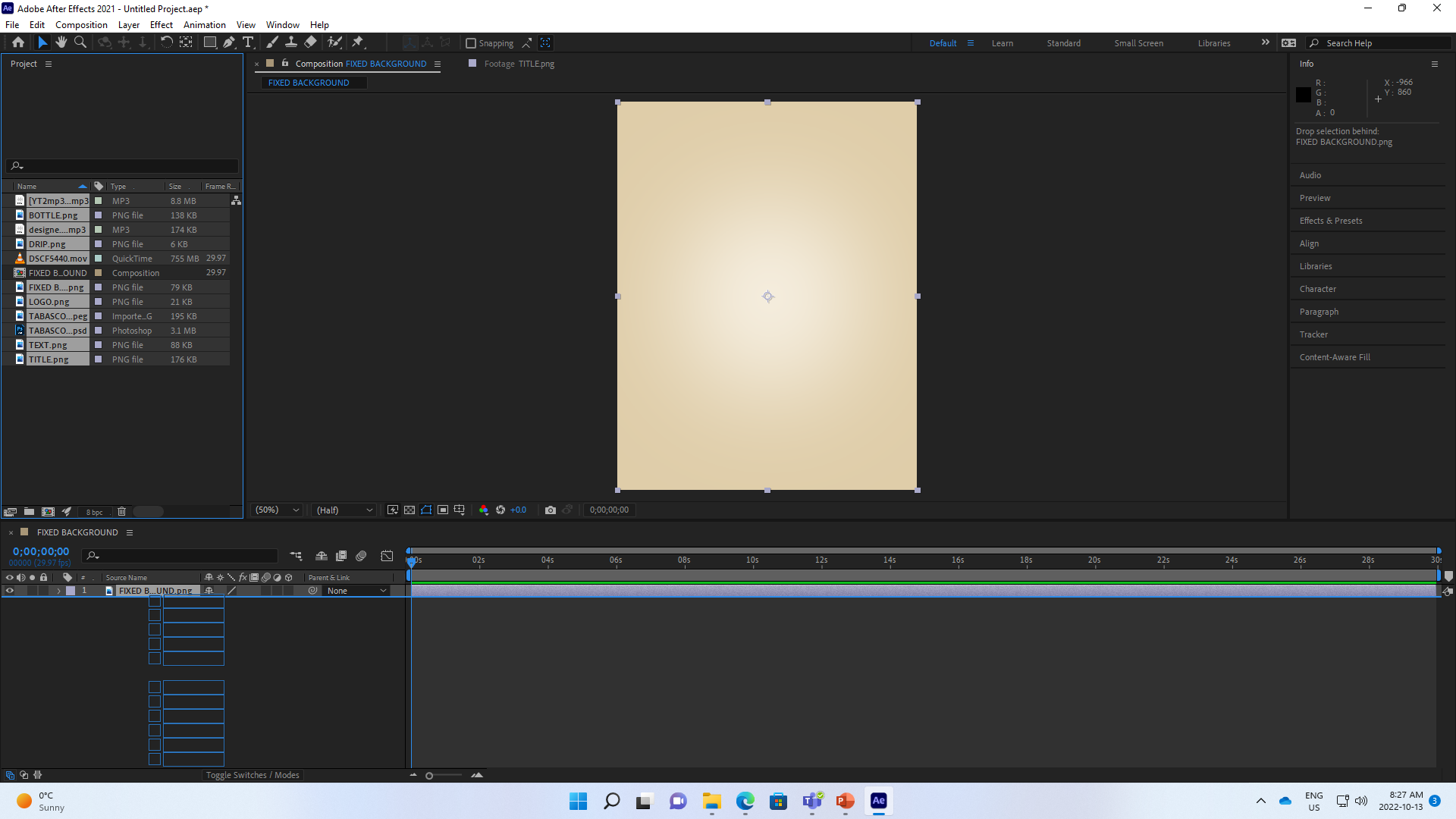
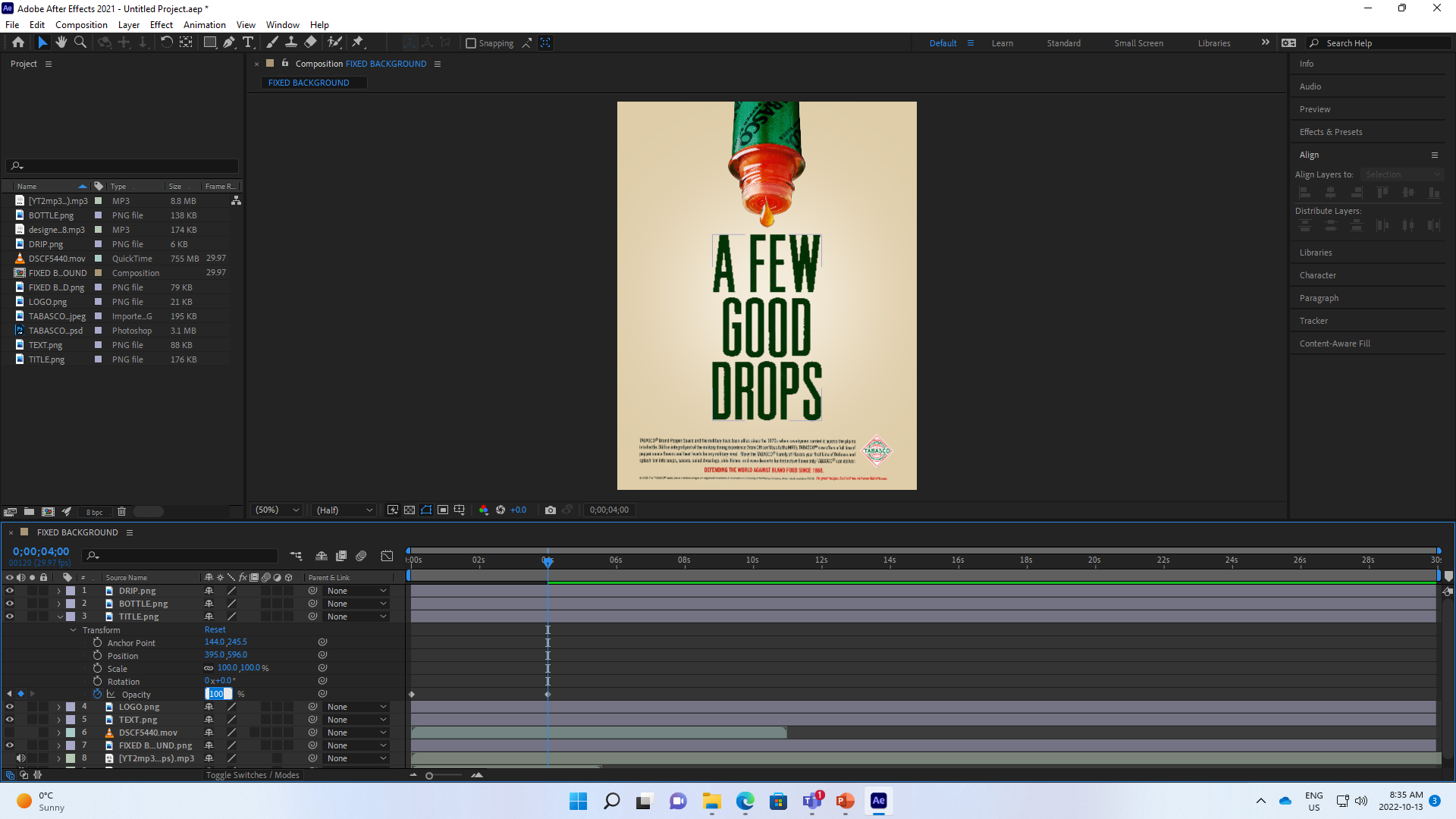
Final Project
IN THIS SECTION, YOU WILL HAVE THE CHANCE TO CHOOSE AND DESIGN A PROJECT THAT RELATES TO WHAT YOU HAVE LEARNED IN THIS CREDIT (SEE FINAL PROJECT DESCRIPTION BELOW). PLEASE DOWNLOAD THE INSTRUCTIONS AND FOLLOW THEM CAREFULLY. PLEASE SEE ME IF YOU ARE STRUGGLING TO COME UP WITH A PROJECT IDEA OR NEXT ADDITIONAL GUIDANCE.
Final Project Description: For this final project, you will make a short animated story with audio (at least 7 seconds).
> How to do Final Projects in Multimedia
> Final Project Ideas & Resources
> Student Example (Final Project)
RESOURCES:
> Slideshow Presentation Tips (PDF)
> Storyboard Template (Print Template)
> After Effects Glossary (Website)
> 12 Principles of Animation (YouTube)
ACTIVITY FILES:
> Flipbook Activity (PDF)
SOFTWARE:
> Wick Editor (Online Animator)
> FlipaClip (2D Animation App)
> Pivot Animator
> Pencil2D
> Motion Leap
> Onion Cam2 (Apple App)
> Stop Motion Studio (App)
> CapCut Video Editor (Online/App Editor)
> Kapwing Video Editor (Online Editor)
> GIMP (Free, Raster)
> Inkscape (Free, Vector)
> Vectr (Free, Vector)
ASSETS:
> Slidesgo.com (Free Ppwt. Templates)
> Pexels (Free Images, Videos)
> Pixabay (Free Images, Videos, Sounds)
> Videezy (Free Stock Video)


